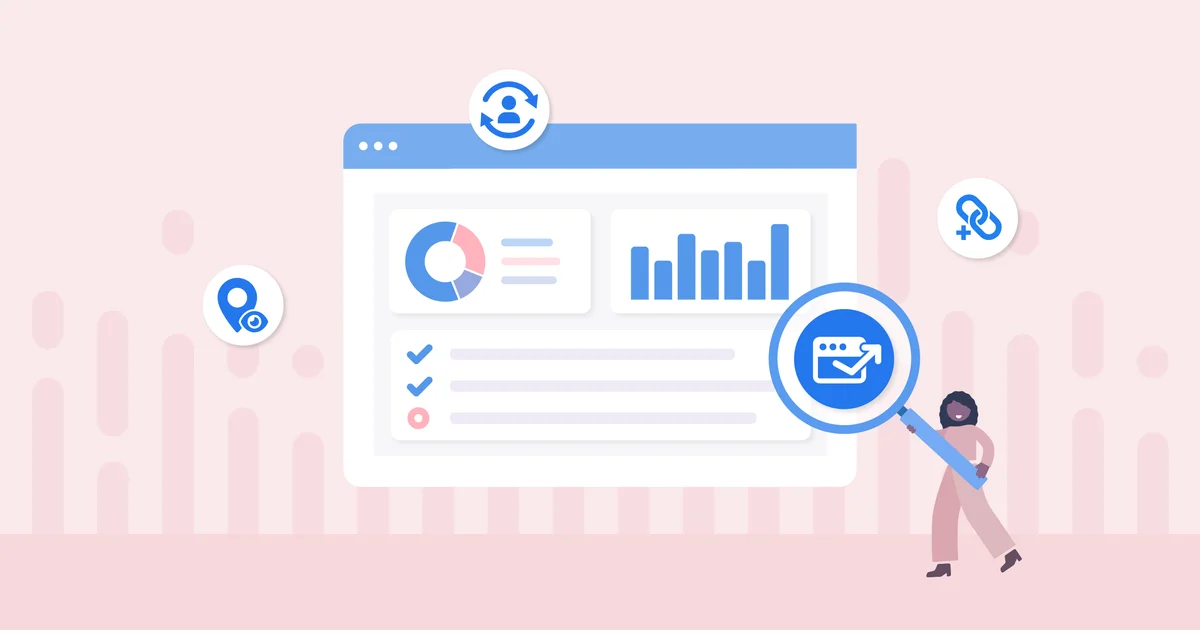Ensuring that your website stands out is no easy feat in the digital world we are living in today. From the structure of the website to its contents, everything has to be as perfect as possible to draw in and retain the target crowd. Basic SEO optimization, however, makes the attempt a little bit easier, if not entirely effortless.
In this beginner’s technical SEO guide, we have tried to demystify SEO basics in a way that is easy to understand, even when you’re not a tech whiz. Let’s get started!

Understanding SEO: What is Search Engine Optimization and Why is It Important?
Search Engine Optimization (SEO) is the process of optimizing web pages and their content to be easily discoverable by users when they search for terms relevant to your website. Basic SEO optimization refers to techniques that you can use to improve your website’s ranking in search engine results pages (SERPs) like Google, Bing, Yahoo, etc., resulting in increased organic traffic and enhanced overall visibility.
SEO plays an important role in digital marketing because it helps businesses reach more potential customers online who are actively looking for their products or services. Optimizing your website as per the best SEO practices allows it to have improved rankings in the SERPs, which facilitates a greater volume of organic traffic and consequently boosts conversions. Additionally, SEO increases brand awareness as people tend to trust websites that appear higher up on SERPs due to their perceived relevance and authority on certain topics.
Basic SEO Optimization with Keywords: The Foundation of SEO
Basic SEO optimization with keywords involves researching and using relevant words or phrases that users might search for when looking for a product, service, or information related to your business. This includes optimizing website content such as titles, headings, meta descriptions, and page copy so it contains the specific keywords in an appropriate density (too many keywords can lead to keyword stuffing). It is important to place keywords as naturally as possible within a webpage. To do so, you can use keywords as anchor texts for internal linking, incorporate keywords in image alt texts, include keywords in sitemaps, and so on.
However, to start with keyword optimization, you should first conduct comprehensive keyword research. This can be done by using various tools such as Google Keyword Planner and SEMRush. These tools will help you identify the relevant keywords related specifically to your niche.
Here’s how you can fine-tune your basic SEO optimization strategy with keywords:
Title Tags
Title tags offer the very first impression of a website. Craft compelling and unique title tags for your individual web pages to have maximum SEO impact. Do not forget to incorporate a couple of relevant keywords in your title tag to boost on-page SEO.
Meta Descriptions
Meta descriptions are a critical part of basic SEO optimization that people often forget about. Simply put, meta descriptions are concise, summed-up summaries of your web pages. A well-crafted meta description should contain relevant keywords and entice users into clicking on your link when it appears in search results.
Header Tags
Header tags are HTML elements that help define how the content on a webpage is structured. They can be used for basic SEO optimization by providing search engines with important information about your website’s content and emphasizing your content’s readability. You can use the Header Tags, such as H1, H2, H3, and so on, to demonstrate the hierarchy of the content and categorize the headings & subheadings for clearer representation.
URL Structure
Create clean and readable URLs that provide a clear roadmap for search engines and users alike. Include relevant keywords in your URLs to convey the topic of your page. Having a well-structured URL in place can benefit both SEO and user experience.
Image Alt Text
Alt text is a descriptive attribute that can be added to an image within a website as a means to define the image for the search engines to interpret. When writing alt text, use concise language that accurately describes the content of the image, while incorporating relevant keywords for SEO purposes. This not only improves accessibility for users with visual impairments but also signals to search engines what the images are about.
Basic SEO Optimization with Off-Page SEO: Building Authority and Trust
Off-page SEO is a set of activities that can be done outside the boundaries of your website to improve its ranking in the SERPs. It involves building backlinks from other websites, social media optimization, creating content on high authority sites, and improving online visibility.
Here’s how you can ace basic SEO optimization with off-page SEO:
Backlinks: The Currency of Online Authority
Backlinks, also called inbound links, are links from external sources to your website or webpage. Simply put, they are like digital endorsements for your website and are treated much like a currency of online authority. Out of all the off-page SEO strategies, acquiring high-quality and high-impact backlinks from authoritative sources is probably the most critical and challenging. The more authoritative the sites link to yours, the more credibility your website gains in the eyes of search engines. At the same time, however, the quality of the backlinks is more important than the quantities.
Social Media Presence
Engaging beyond your website is a fundamental aspect of off-page SEO. You can use your social media platforms to further the off-page SEO strategy as social signals like likes and shares can positively affect your website’s organic search engine rankings. By actively engaging with followers, potential customers, and influencers through various platforms like Facebook, Instagram, LinkedIn, X, etc., you can effectively promote content related to your business that will help boost its visibility online and also increase the chances of improving rankings.
Online Reviews
Customer reviews and feedback are essential for basic off-page SEO optimization. Not only do they boost your visibility, but Google also values businesses with a strong online reputation that comes from genuine feedback and honest customer reviews. Encourage customers to leave their honest opinions about your business on sites like Google My Business (GMB) as well as other platforms so you can benefit from both positive and negative comments in the long run.
Guest Blogging
Contributing content to other websites in your niche is a win-win strategy. Writing a guest blog on a renowned, authoritative website within your industry will demonstrate your knowledge and expertise in the subject matter. You will also earn a valuable backlink, which can considerably boost your SERP rankings.
Community Engagement
Even though it is not directly related to basic SEO optimization, building a digital community can help you in your off-page SEO efforts in the long run by helping you acquire backlinks and a credible positioning within the niche space. You can start by participating in groups, forums, events, etc., and provide valuable insights and solutions to your audience. It will establish you as an authority and can lead to organic mentions and backlinks as your reputation grows.
Basic SEO Optimization Best Practices: The Essentials
By paying attention to both the on-page and off-page elements, you’re not only making your content more accessible and user-friendly but also sending positive signals to search engines about the relevance and quality of your content. However, even the smallest slip-ups can dampen your entire effort. There are many professional SEO services experts out there who can assist you in your SEO journey and make it more seamless. Or you can do it yourself. For example, to prevent any slip-ups, make sure you are paying attention to the following while executing basic SEO optimization.
Here are the essentials:
Mobile-Friendly Design
Mobile-friendliness is an important factor for basic SEO optimization. It helps ensure that a website can be easily accessed and viewed on mobile devices, which are increasingly popular with users today. This allows websites to reach the widest possible audience. Additionally, search engines like Google prioritize mobile-friendly websites in their rankings as they want to provide better user experiences for people using their services.
Page Loading Speed
Search engines like Google consider page loading speeds when determining a website’s ranking in their SERPs. If a site takes too long to load, it will be seen as less relevant by the search engine and may rank lower than other sites with faster loading times. Page-loading speed can also affect user experience. Since slow page-loading speed can lead to higher bounce rates, it could negatively impact your click-through rate and organic traffic numbers. All these make page loading speed a serious consideration for basic SEO optimization.
Quality Content
Content is at the heart of SEO; the quality of your website’s content directly affects its SEO efforts, thereby securing an extremely crucial role in basic SEO optimization. The content should provide value to readers by being informative, entertaining, or providing insights into a given subject matter. It should be regularly updated as well, to keep up with the changing trends and align with the transforming consumer behaviors.
Conclusion
Basic SEO optimization may sound simple, but it is rarely so. It is not unachievable, either. With the right balance of practices, you can turn SEO into a cakewalk. Hence, above anything, balance is of the utmost importance. For instance, we know that incorporating keywords is important; but keyword stuffing is bad and can hurt your website’s ranking. So, maintain a balance between the two. Here’s our success mantra: aim for a natural and engaging flow in your content that caters to both users and search engines, and voila! You will be acing your SEO efforts from day one!






